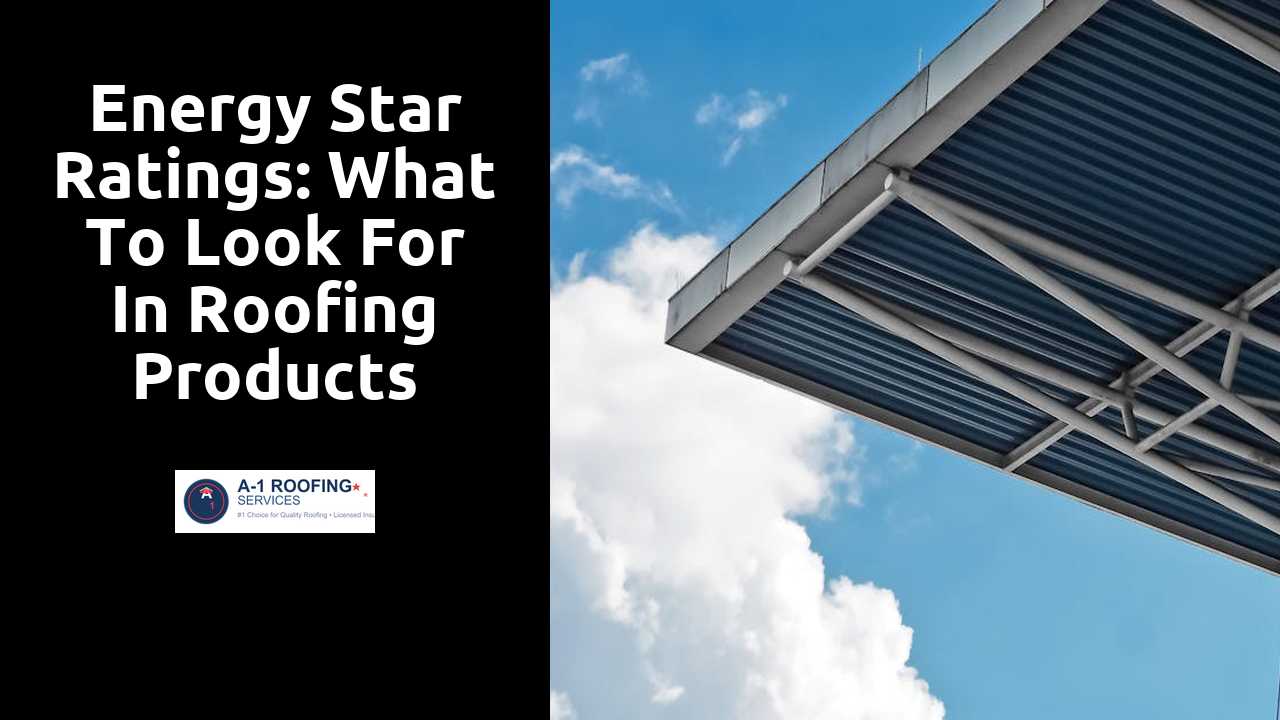
Energy Star Ratings: What to Look for in Roofing Products
Table Of Contents
Popular Energy Star Rated Roofing Options
Homeowners increasingly seek roofing materials with Energy Star ratings due to their ability to reduce energy costs and improve overall comfort. Asphalt shingles now come in a variety of reflective options that can significantly lower surface temperatures. This helps reduce the heat absorbed into a home, especially in warmer climates, leading to less reliance on air conditioning systems. In addition, certain architectural shingles are designed with advanced cool roofing technology that increases energy efficiency.
Another popular choice is metal roofing, known for its durability and energy-saving properties. Many metal roofs are manufactured with reflective coatings that can deflect solar heat, promoting lower energy use for cooling. Tile roofs also offer energy efficiency benefits, particularly when made from materials like clay or concrete that naturally reflect sunlight. These options provide long-lasting and attractive aesthetics while contributing to energy savings in homes across the nation.
Click here for additional info.
A Comparison of Shingles, Tiles, and Metal
Shingles are one of the most common roofing materials due to their affordability and ease of installation. They typically come in asphalt, wood, or fiberglass varieties. Asphalt shingles, in particular, are widely used for their durability and versatility. While they generally have decent energy efficiency, their performance can vary based on color and material composition. Lighter-colored shingles reflect more sunlight, contributing to better energy performance, while darker shades absorb heat, which can influence the building's cooling costs.
Tiles offer a distinct aesthetic appeal and are often chosen for their longevity and insulating properties. Clay and concrete tiles are popular choices, providing a more traditional look. These materials are highly fire-resistant and can withstand extreme weather conditions. However, they tend to be heavier than shingles, potentially requiring additional structural support. Metal roofing is increasingly favored for its longevity and recyclability. Available in various styles and finishes, metal roofs are known for excellent energy efficiency and can significantly reduce cooling costs. The initial investment may be higher, but the long-term benefits often outweigh the upfront costs in terms of durability and reduced maintenance needs.
The Role of Insulation in Energy Efficiency
Insulation acts as a critical barrier against heat transfer, significantly influencing the overall energy efficiency of a roofing system. During summer months, well-insulated roofs help keep indoor spaces cool by resisting the heat from the sun. In winter, insulation prevents heat loss, allowing homes to maintain a comfortable temperature without relying heavily on heating systems. This dual functionality not only promotes comfort but also leads to savings on energy bills.
Selecting the right type of insulation is essential to maximize energy efficiency. Various materials, such as fiberglass, cellulose, and spray foam, offer different R-values, indicating their effectiveness in resisting heat flow. Proper installation is equally important; gaps and compression can dramatically reduce insulation efficiency. Homeowners should consider professional guidance to ensure that their roofs are equipped with the best insulation options for their climate and specific needs.
How Proper Insulation Enhances Roofing Performance
Insulation plays a crucial role in maintaining the energy efficiency of a roofing system. By reducing heat transfer between the interior and exterior of a building, proper insulation minimizes the need for heating and cooling. This not only enhances comfort but also helps lower energy bills. Effective insulation methods can include using materials like spray foam or fiberglass batts, which fill gaps and prevent air leaks.
A well-insulated roof can also contribute to the longevity of roofing materials. By keeping temperatures stable, it reduces the thermal expansion and contraction cycles that can cause wear and tear. This protection allows roofing materials to perform better under varying weather conditions, reducing the risk of damage from ice, snow, and intense heat. A comprehensive insulation approach creates a more resilient roofing system capable of withstanding the test of time.
Maintenance Tips for Energy Efficient Roofing
Regular inspections are essential for maintaining energy-efficient roofing. Homeowners should check for signs of wear, such as cracked shingles or loose tiles, which can significantly impact energy performance. Cleaning gutters and downspouts helps prevent water damage that can compromise insulation. Inspecting flashing and seals around vents and chimneys minimizes the risk of leaks that could reduce energy efficiency.
It's important to remove debris from the roof surface to prevent mold growth and improve airflow. Consider scheduling professional maintenance at least once a year. This can identify potential issues early and ensure that the roofing system works effectively. Ultimately, addressing small concerns promptly can extend the life of the roof and maintain its energy-efficient properties.
Ensuring Longevity and Performance
Regular maintenance is essential for maximizing the lifespan of energy-efficient roofing products. Homeowners should routinely inspect for signs of damage such as loose shingles, cracks, or debris accumulation. Cleaning gutters and downspouts helps prevent water pooling, which can lead to deterioration over time. Checking flashings around vents and chimneys is also important to ensure they remain watertight. These proactive steps can ward off larger issues and maintain the roof's performance.
Additionally, investing in professional inspections can provide vital insights into the health of your roofing system. Experts can identify areas of concern that may not be visible during casual inspections. Proper ventilation is crucial to prevent heat buildup, which can lead to premature wear. In climates that experience heavy snowfall or rainfall, implementing snow and ice management techniques is vital. By focusing on these aspects, homeowners can ensure their energy-efficient roofing continues to perform optimally for years to come.
Related Links
Comparing Energy-Efficient Roofing Options for Your HomeThe Advantages of Cool Roofs in Residential Areas